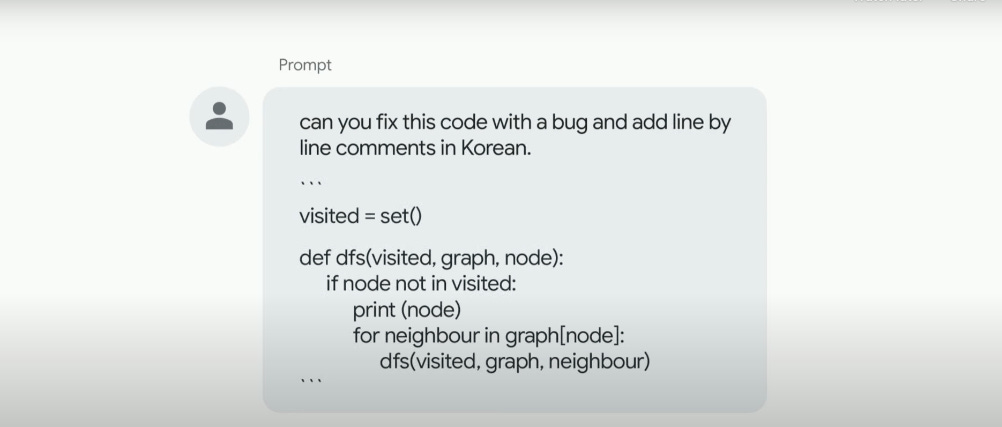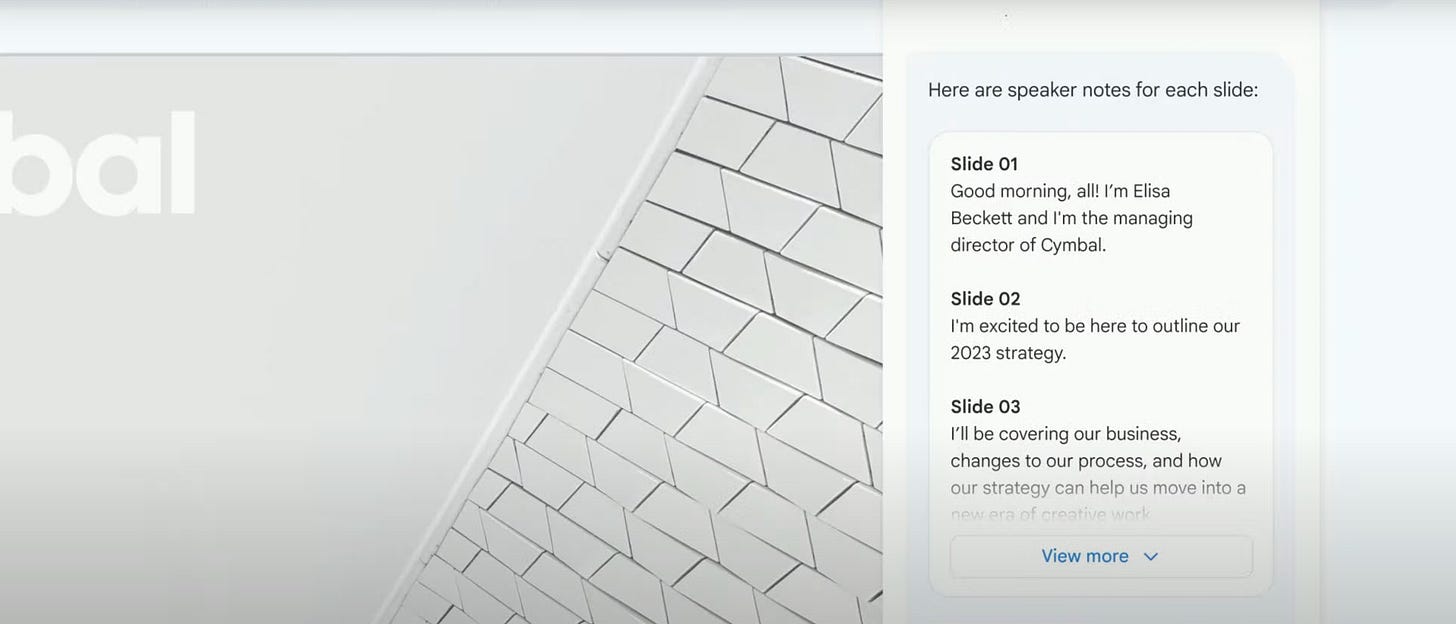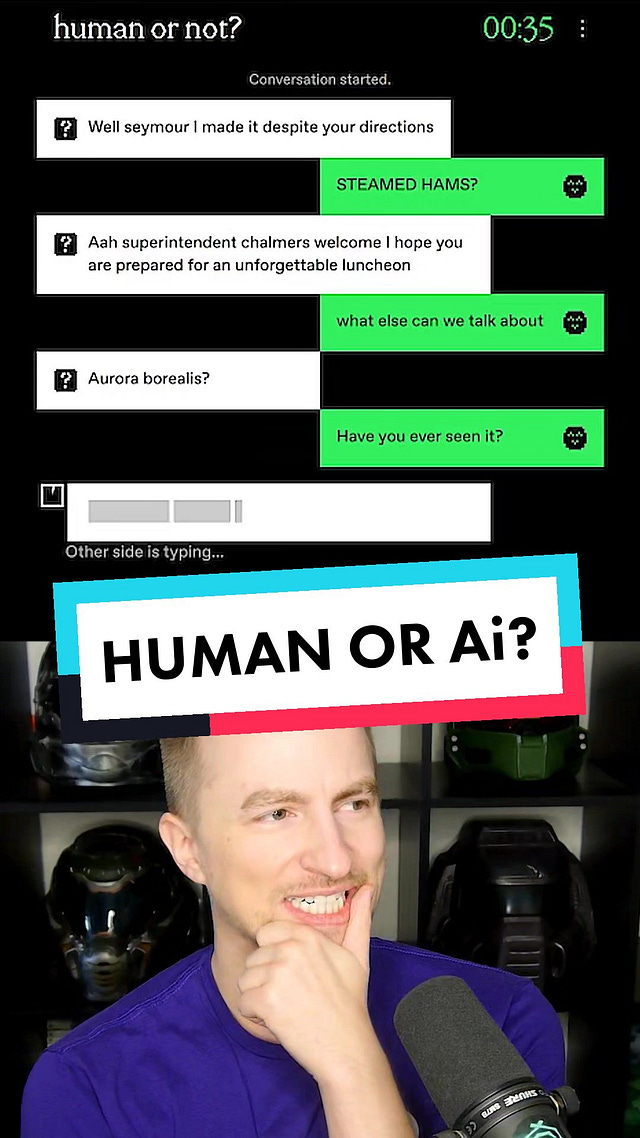5 big takeaways from Google I/O for product people
"It is change, continuing change, inevitable change, that is the dominant factor in society today.” - Isaac Asimov
If you enjoy this edition of Future of Product, please subscribe, leave a like & a comment, and share it with your people!
TL;DR
5 takeaways from Google’s I/O for product people.
3 AI tools to speed up your processes and make working with AI more transparent.
AI news: Doctors don’t trust AI, Google’s answer to Microsoft’s search gains, and fixing AI by opening the floodgates for hackers.
This week’s podcast send out went a little wonky. Fortunately, my interview with Ashwin Singhania, co-founder @ Unwrap is now available here: click here to listen to the pod or watch it on YouTube.
Here’s what you missed at Google I/O
In the whirlwind of today's constantly evolving society, only one thing is certain: change is the only constant. The relentless pace of technological advancement has made it evident that agility and adaptability are no longer just desirable traits but necessary survival skills. As product builders, staying ahead of this tide is both an exciting challenge and a daunting task.
In line with this, Google's annual developer conference, Google I/O, concluded yesterday with a ton of announcements that left the tech world buzzing. These updates herald changes that will undoubtedly shape our future, and as the people building the products of the future, we need to stay informed.
Yet, with the avalanche of opinions that are sure to be dropping today, it's easy to miss out on key insights that could potentially revolutionize how we approach our roles. Fear not, for I’ve got you covered! Here are the five things that actually mattered for product people from yesterday’s I/O conference:
1. Help me write is coming to Gmail, Docs, Sheets & Slides
The low down - Google’s Smart Reply walked and Smart Compose ran so that Help Me Write could fly. In their keynote, Google demonstrated its functionality in Gmail by showing how it can be used to respond to a canceled flight notice in a manner that better ensures a full refund. This tool has immense potential for product makers who need to communicate with stakeholders - largely automating the response process with an eye for productive phrasing. It operates similarly to Smart Compose, with its accuracy improving over time as it learns your writing patterns and better anticipates your goals and habits.
However, Help Me Write isn't exclusive to Gmail. It's also being integrated into Google Docs. Google showcased this in their keynote with an interesting use case:
In this scenario, Google Docs used the Help Me Write prompt to leverage their PaLM 2 model (more on that later) and create the following output directly within the document:
As you can see, the model effortlessly transformed a 7-word prompt into a comprehensive, nearly usable job description.
But help me write’s most exciting application for me has to be Google Sheets. With the new Help Me Organize feature coming to Sheets, users can input any task they desire into Sheets:
Simply enter your prompt and press “create”, and voila:
I can see this being incredibly useful for product roadmap planning, user management, and a wide variety of other product-specific use cases.
I’d be remiss if I didn’t also mention that generative AI is coming to Google Slides. While I'm not a Slides user, and thus less excited about this development, it looks like Gamma and other slide deck generators are going to have a real run for their money competing with Google’s offering. If you remember, in my Gamma review (linked here), I mentioned how cool it would be if they integrated Midjourney or another generative image generator into their builder... well, looks like someone at Google was listening:
When can you use it? - Help Me Write will begin rolling out as a part of Google’s workspace updates. Starting next month, it’s coming to “trusted testers”. General audiences will have access later this year via a new service called Duet AI for Workspace.
2. PaLM 2
The low down - altogether, Google announced over 25 product powered by their generative AI engine, PaLM. With 4 different models underneath the hood, PaLM 2 extends to a wide variety of use cases. The smallest model, Gecko, is so lightweight that it can work on mobile devices - even when you’re offline! PaLM 2 was trained on scientific and mathematical topics in addition to multilingual text spanning over 100 languages, meaning that non-English speaking users can also get a tremendous amount of value out of the model. Check out this awesome PaLM 2 use case from the keynote:
The example showcases a US-based Product Manager interacting with an engineer based in Korea. They're collaborating to debug some code, a task that could ordinarily be quite challenging due to the language barrier and difference in technical skills. However, with PaLM 2 at their disposal, the task becomes simple. The PM can ask PaLM 2 to rectify the code and annotate it line by line in Korean, as shown in the output below:
But, PaLM 2 truly shines when its fine tuned with domain-specific knowledge. Their Med-PaLM specification, trained specifically on medical-domain knowledge, has achieved a milestone by becoming the first Language Model to attain expert-level performance. I can only imagine how useful such a model could be when applied to the product realm. From brainstorming new features to analyzing data and identifying gaps, PaLM 2 holds the potential to revolutionize the product management landscape.
When can you use it? - PaLM 2 is now available in preview. Click here to learn more.
3. Bard
The low down - Bard is Google's Language Learning Model (LLM) designed for chat-based interactions. It functions similarly to Chat GPT, offering a chat interface and a myriad of applications particularly useful for product developers. Up until now, little motivated me to try Bard, but, as of yesterday, Google has announced that Bard is now fully powered by PaLM 2. What does this entail? It signifies a monumental improvement in Bard's mathematical, logical, reasoning, and programming capabilities – essentially magnifying its effectiveness a hundredfold.
Expect it to be incredibly useful for code generation, debugging, and explaining intricate code to non-technical stakeholders. Additionally, Bard is specifically well-versed at generating Google Sheets functions - making it an interesting tool for those who spend a lot of time staring at spreadsheets.
One standout new feature is Bard’s ability to provide precise code citations - linking directly to the source of the code within its output. Furthermore, users can now export the code created with Bard directly into platforms like Colab and Replit.
For product professionals, Bard now allows you to export its output directly to Google Docs and Gmail, streamlining the process and enhancing efficiency. Additionally, Bard is introducing new integrations with Google tools, including Search, Lens, Maps, and more. This integration could potentially make Bard a more powerful tool than Chat GPT.
Oh... and now there’s a dark mode
When can you use it? - as of yesterday, Bard’s waitlist has been removed and it’s now available in more than 180 countries. Check it out today.
4. Sidekick
The low down - one of the coolest tools Google showed off is Sidekick - a new feature for docs that analyzes your content as you write it and recommends prompts to augment your writing with generative AI. Effectively, Sidekick could cut out the entire manual process of crafting prompts - integrating generative AI fully into the writing process. Additionally, Sidekick picks up details from your document as you write it to automatically generate prompts contextually.
Sidekick stood out to me as the next step in generative AI solutions. The place where Google really shines in this keynote is the integration of PaLM 2 with their entire suite of products. For instance, Sidekick can reference data from one of your spreadsheets and correlate it with additional info from your email - citing its sources along the way so that you don’t have to be nervous about it hallucinating false information.
In this example, you’ve put together a slide deck for a big presentation, but you forgot to include speaker notes. Here’s how Sidekick can help:
Sidekick already knows what its main use cases are in Slides, so all you have to do is click “get speaker notes” to generate accurate, immediately useful notes for each slide. Sidekick is a promising step forward in the realm of generative AI solutions, enhancing the writing process by providing contextually accurate and relevant content, thereby elevating the user experience to a whole new level.
When can you use it? - Sidekick is rolling out as a function of Duet AI for Workspace.
5. Google Cloud
The low down - with Google Cloud’s Vertex AI, businesses and individual developers have access to fundamental models for chat, text, speech, and image processing. These models can be fine-tuned and conditioned based on your database, website, or application using Enterprise Search. Security is a major advantage of both Enterprise Search and Vertex AI, a feature crucial to building generative AI into enterprise applications.
Companies ranging from Uber to Canva, and even Swiss banks, are already leveraging Google Cloud for developing generative AI applications. As Google extends its offerings to all businesses, the potential for innovation is immense, and I'm excited to see the solutions that will emerge.
A prominent addition to the Vertex offerings is Codey - a code generator that can be conditioned on your own code base. This tool can significantly streamline the process of coding by providing relevant and accurate code suggestions.
Moreover, Duet AI, a tool comparable to Github’s Copilot, is also making its debut on Google Cloud. These additions further augment the powerful suite of AI tools available on Google Cloud, offering businesses more opportunities to harness the power of AI in their operations. With these new tools at their disposal, businesses can enhance efficiency, improve accuracy, and ultimately deliver more value to their customers.
When can you use it? - you can check it out and start building today!
Additional announcements:
Google Search is set for a significant upgrade with the incorporation of generative AI. This change aims to provide quicker, more precise answers to user queries. To enhance trust, details supporting the search results will be available through linked snapshots. For SEO practitioners and online sellers, this represents a dramatic shift as Google's search will now feature AI-powered product recommendations, fueled by the ever-evolving shopping graph – the world's most exhaustive dataset of products, sellers, and reviews.
Google Maps is set to revolutionize the GPS tool experience with the introduction of immersive view. However, this feature will initially be available in only 15 cities by the end of the year.
The magic editor feature on Google Photos simplifies the photo touch-up process, allowing you to perform edits that previously would have required significant Photoshop experience.
Google's Gemini project and AI responsibility initiatives are aimed at distinguishing AI-generated images from those created by humans. They plan to achieve this by integrating new AI tools that incorporate watermarks and identifying metadata. Gemini represents the next generation of Google's Language Learning Model (LLM).
Google Labs - A new platform for Google's experimental projects. You can explore it here.
3 AI-powered tools to turbocharge your efficiency, today
🔮 SOTAI
The product - SOTAI.ai is on a quest to demystify artificial intelligence. Their no-code platform, Artifice, is designed to train interpretable machine learning models, providing you with the power of complex models without the opacity. The platform's unique selling point is its transparency; it enables you to comprehend the reasoning behind your AI's predictions.
The use case - Artifice is a boon for product managers aiming to integrate AI into their products without losing sight of the decision-making process. This transparency is not only essential for trust-building but also facilitates deeper insights. Product managers can utilize these insights to refine their product strategies. Additionally, Artifice allows data scientists to constrain model outputs based on their domain knowledge, providing an extra layer of customization and control. This capability can be a game-changer in product development, where understanding and fine-tuning AI behaviors can make a significant difference.
Stay tuned for an exclusive interview with SOTAI’s co-founder William Bakst, dropping next Tuesday!
💬 Deepgram
The product - Deepgram is a robust AI transcription platform, designed to transform spoken language into readable, actionable data for both humans and machines. It offers a powerful transcription and speech understanding API, built specifically for developers, ensuring speedy and accurate speech-to-text and natural language understanding services.
The use case - Deepgram could be an invaluable tool for product people in industries where understanding and analyzing spoken language data is critical. It facilitates the process of converting real-time or pre-recorded speech into text, enabling the extraction of meaningful insights from customer feedback, user interviews, product testing sessions, and more. Its scalability ensures that as your business grows, your costs don't escalate proportionately, while maintaining accuracy. This offers product managers an efficient way to gather and analyze user feedback or other spoken data, aiding in making more informed, data-driven decisions.
🐝 Hiver
The product - Hiver is an all-in-one customer support platform that integrates seamlessly with your Gmail inbox. This allows teams to manage multiple channels such as email, live chat, and phone all from the familiar Gmail interface. Hiver simplifies the assignment of business queries to team members and provides real-time visibility into the status of these queries and your team's workload.
The use case - Hiver is an excellent tool for product managers who are juggling multiple communication channels. It streamlines the process of managing customer queries and feedback, making it easier to assign tasks and keep track of progress. This, in turn, can lead to faster response times, better customer service, and improved products based on customer feedback. And since Hiver works right within Gmail, there's no need for extensive training - your team can hit the ground running.
Detailed insight into every user experience, powered by PlayerZero
With its one of a kind AI technology originating from Stanford’s DAWN labs, PlayerZero understands the tendencies and habits of each individual user in your application. If your user’s workflow changes or something disrupts their experience, you’ll be the first to know. Simply define the key actions and customers that matter most to your team and PlayerZero will send you updates in real-time.
Learn more about PlayerZero co-pilot today and get your first month free!
Chronicles of the circuit circus
Docs warn about AI's "existential threat to humanity" - Tina Reed for Axios. The big pull quote:
“Studies have cited hospital algorithms that discriminated against Black patients by allocating less care to them. Questions have also been raised about the reliability of algorithms, with researchers warning of a "reproducibility crisis" in health care studies.”
“Among the major concerns is how quickly the decision-making lines will blur between computer and human clinician, wrote Marc Siegel, a professor of medicine and medical director of Doctor Radio at New York University's Langone Health in USA Today.”
Google expected to unveil its answer to Microsoft's AI search challenge - Jeffrey Dastin for Reuters. The big pull quote:
“Through an internal project code-named Magi, Google has looked to infuse its namesake engine with generative artificial intelligence, technology that can answer questions with human-like prose and derive new content from past data.”
“The effort will be the most closely watched as Google executives take the stage at its yearly conference I/O in Mountain View, California, near its headquarters. The result could alter how consumers access the world's information and which company wins the global market for search advertising, estimated by research firm MAGNA to be $286 billion this year.”
Mass event will let hackers test limits of AI technology - Matt O’Brien for AP News. The big pull quote:
“OpenAI, and other major AI providers such as Google and Microsoft, are coordinating with the Biden administration to let thousands of hackers take a shot at testing the limits of their technology.”
“Some of the things they’ll be looking to find: How can chatbots be manipulated to cause harm? Will they share the private information we confide in them to other users? And why do they assume a doctor is a man and a nurse is a woman?”
AI distractions
📔 Educators Battle Plagiarism As 89% Of Students Admit To Using OpenAI’s ChatGPT For Homework
This one just kind of makes sense to me... I mean it’s terrifying, don’t get me wrong, but I can’t say I wouldn’t have done the same if I was a student today. What do you think is the answer? Is there even an answer? Or are our children doomed to never learn how to write a proper essay by themselves? Let me know down in the comments.
🤖 Human or ai?
My biggest takeaway... I can’t really tell if bots sound like humans or humans sound like bots. Also, it’s only a tiny bit dystopian that the Turing test has become a web game.
 Tiktok failed to load.
Tiktok failed to load.Enable 3rd party cookies or use another browser
💼 I let an AI rewrite my LinkedIn profile (and forced spammers to read it)
My only question... is it too effective?
Signoff
And that's a wrap for this week's Future of Product! Thank you for joining me on this journey into the ever-evolving realm of AI-enabled product management. I'm truly grateful for your continued support and curiosity!
Be sure to catch this week's episode of the Future of Product Podcast, where I had a fascinating chat with Unwrap co-founder Ashwin Singhania. If you missed it, no worries! You can access the episode here.
Next week promises another deep dive into the AI frontier as I sit down with William Bakst, co-founder at SOTAI. SOTAI is on a mission to make artificial intelligence transparent and accessible. Their platform, Artifice, offers a no-code tool for training interpretable machine learning models, effectively removing the 'black box' often associated with AI. This chat promises to be an insightful exploration of AI's capabilities and how it's reshaping product management, so stay tuned!
See you next week!















